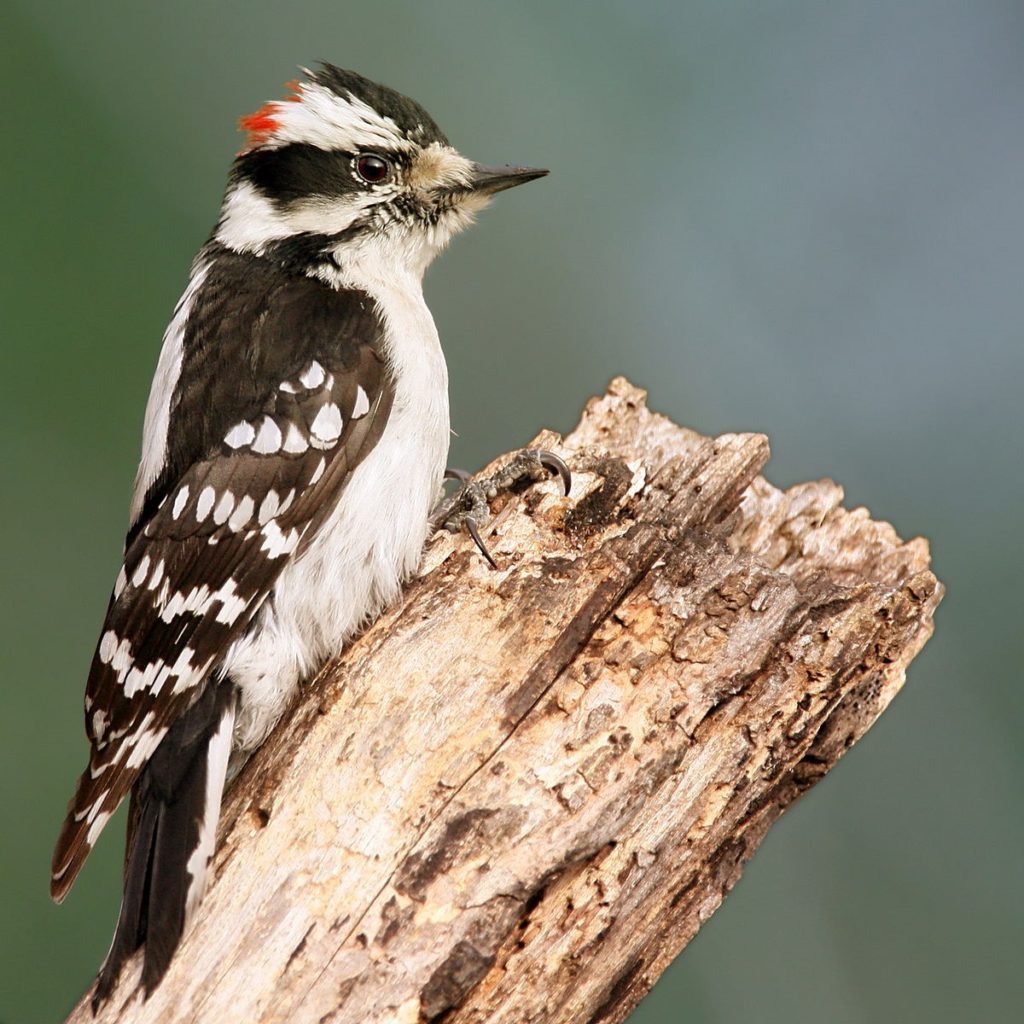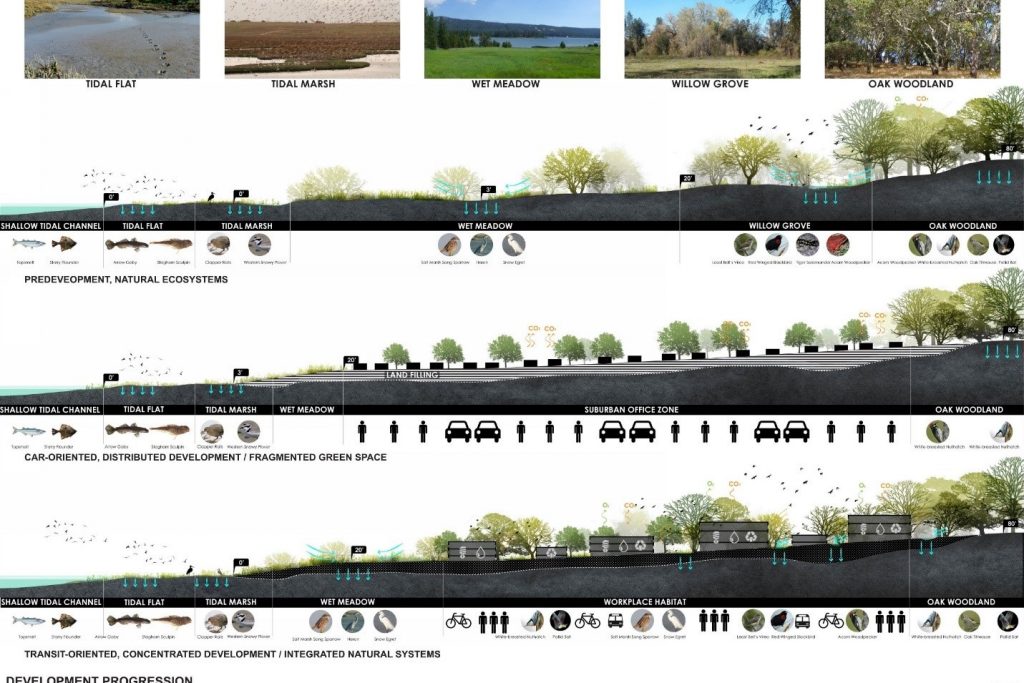As part of our sustainability strategy, we’ve committed to protect more land than we use by 2025. That’s 11,000 acres globally and here in Mountain View, our new Silicon Valley Campus (SVC) is on 32 of those acres. Our site was intentionally designed as not only a place for employees, but also a place that rebuilds the local ecosystem for the plants and animals that lived in Mountain View long before early-morning lattes, reply-all emails, and video conference calls.
“Going way back to the earliest planning stages of this campus, we wanted to integrate habitat into our design,” says Darren Lombardi, senior real estate portfolio manager for Silicon Valley. “The City of Mountain View has a vision for the North Bayshore that moves it from a light industrial area, back to more if its natural state. We considered those guiding principles while we designed a campus for our employees, and early on we began asking questions: Can we build walking trails? Can we restore wetlands? What used to be here, and how do we turn back that clock?”
Mother Nature’s fringe benefits
Such queries led to a proposal that would replace a disjointed assemblage of office buildings and parking lots with a unique, ecologically-integrated, sustainable campus designed to harness environmental benefits for Microsoft employees. Some of these benefits — recreation, mental and physical health, inspiration for design — are as fundamental to the employee experience as FORTRAN and COBAL are to early code. Yet in many ways, they are the original fringe benefits.

(The Monarch (left) and the Buckeye (right) butterflies are among the many employees will see while walking through the campus)
“There are about 50 different species we’re supporting,” explains Lombardi, quick to point out that it isn’t just humans who will be co-existing in the idyllic setting. “This includes everything from birds to insects — and of course, multiple types of butterflies.”
Species benefitting from the new campus also include the Western Screech-Owl, a small, stocky, wide-eyed bird notable for the dark streaks on its belly. And the Western Scrub-Jay, a brilliant blue bird that prefers to travel in family groupings. There are also multiple woodpeckers and insects, from Oak Bark beetles to grasshoppers and honeybees.
“Nature and the benefits that it provides to people are the foundation of our global economy, our culture, and the overall human experience,” says Microsoft President Brad Smith. “We depend on clean air, water, food, medicine, energy, and building materials that nature provides, but these very ecosystems are threatened or already in decline. Maintaining nature for the benefit of current and future generations is one of humanity’s greatest challenges.”

(The Downy woodpecker, native to the Willow Grove habitat zone, is one of the many birds our campus will support through eco-system restoration)
Re-building Stevens Creek
SVC is in the Wet Meadow and Willow Grove zones of the North Bayshore — vital ecological links between the bay’s Tidal Marshes and the Oak Savanna, Woodland areas. This meant a great deal of research was needed to inform how this area existed pre-industrialization. Tremendous care was then taken to create a design that reintroduces the native ecology.
“We have ecologists, consultants, sustainable engineers, and others advising us every step of the way,” says Lombardi. “Working in conjunction with the city and other businesses in the area, we’re all moving towards the same goal.
Strong expertise was needed since SVC sits across varying habitat zones. For instance, the Northeast corner of the campus is in the Wet Meadow, while the Southeast falls more into an Oak Woodland environment. The campus pulls these converging habitats together via cultural landscapes. From the awning of the dining hall with solar panels attached, to pathways on the 4-acre green roof, each part of the campus is designed to inspire humans and provide everything native species need to survive: food, water, shelter and other elements essential to their lifecycle.

(The campus sits across different habitat zones with distinct properties and wildlife in each, all of which were accounted for while selecting plants and other restorative features)
Turning the clock back
The planting of nearly 600 trees on the site and the enhancement of Stevens Creek-adjacent habitats will benefit migratory songbirds, as well as terrestrial mammals, and other species moving along Stevens Creek. A dozen different varieties of butterflies will be flitting about including the Buckeye known for a Peacock-like wing marking that resembles eyes, and of course, the stunning Monarch.
“Many of the species are tied to the green roof landscape — essentially, we’ve covered almost the entire new building area in green, punctuated by courtyard enclosures that extend two levels down, bringing light, air, and function space to the new work areas,” Lombardi points out.
“We’ve hand-selected specific plants, consistent with the North Bayshore Precise Plan standards and the City’s Plant Palette Recommendations, that are a great help to bees, butterflies, and the like — so they will certainly flourish.” – Darren Lombardi
Whether one is looking for a quiet place to think in the sun or a walking path for a one-on-one meeting, the restoration of the surrounding ecosystem ensures employees will be able to connect in this natural setting for years to come.
If you’re interested in joining us as we journey into the new campus, open roles in the Bay Area can be found here: https://aka.ms/MicrosoftBayAreaCareers.



